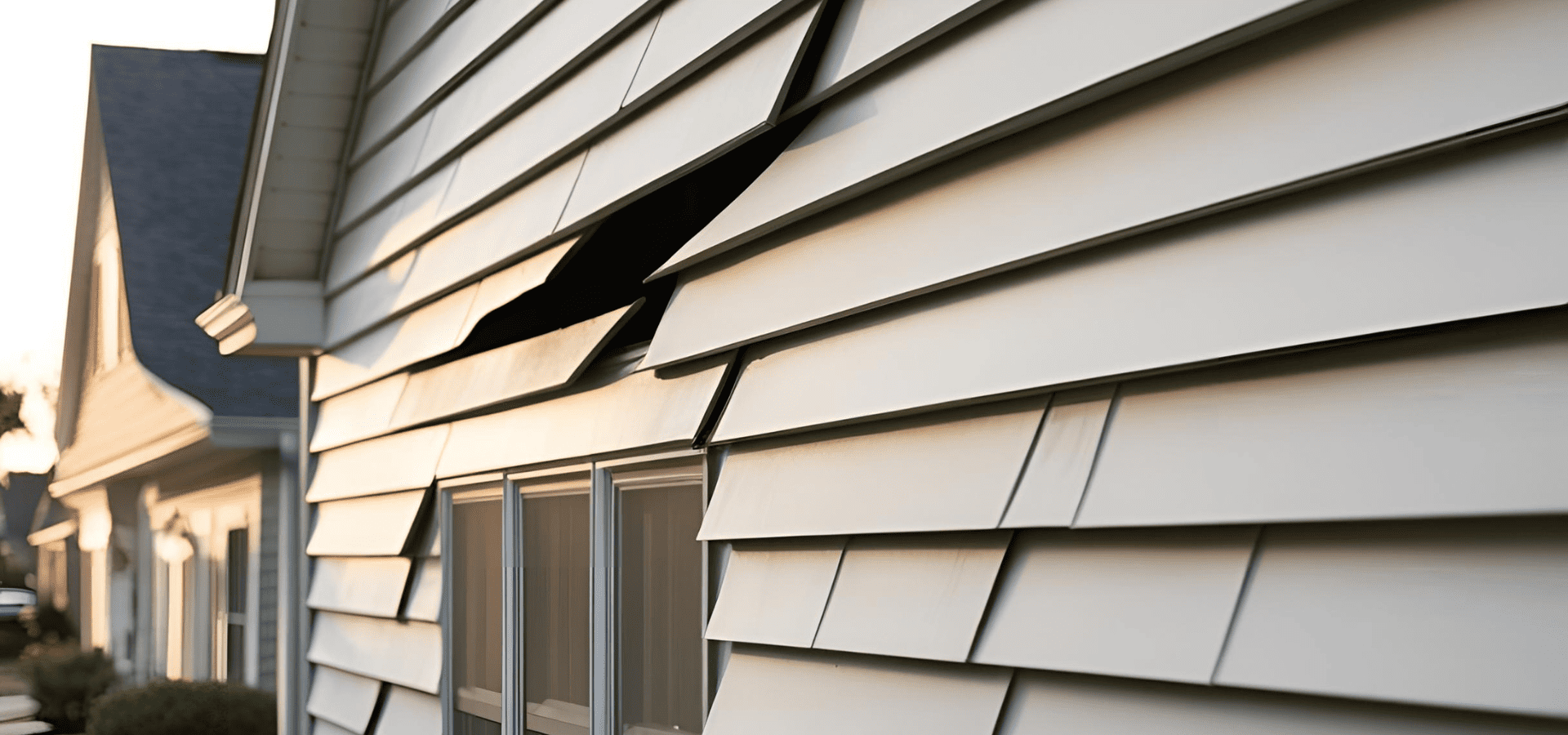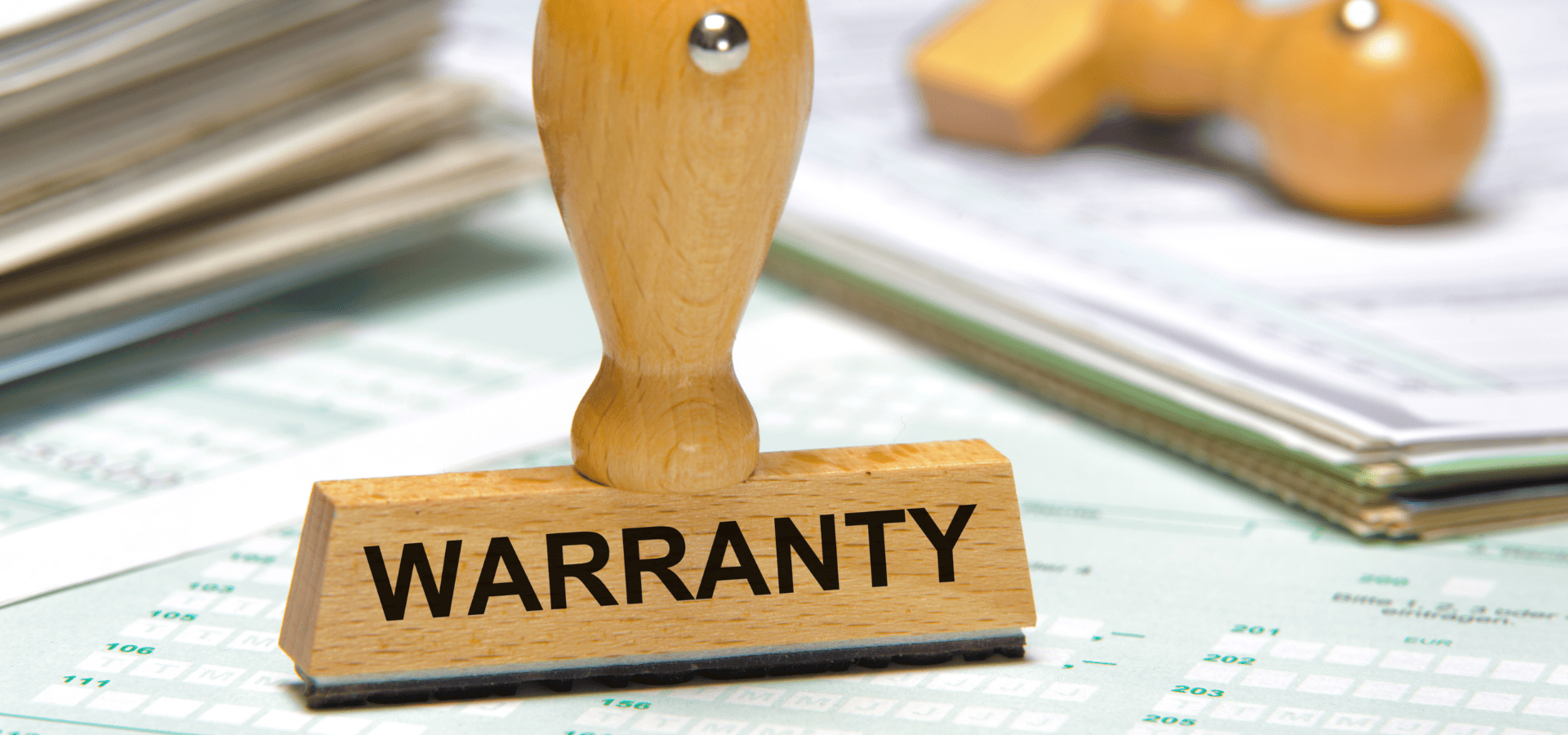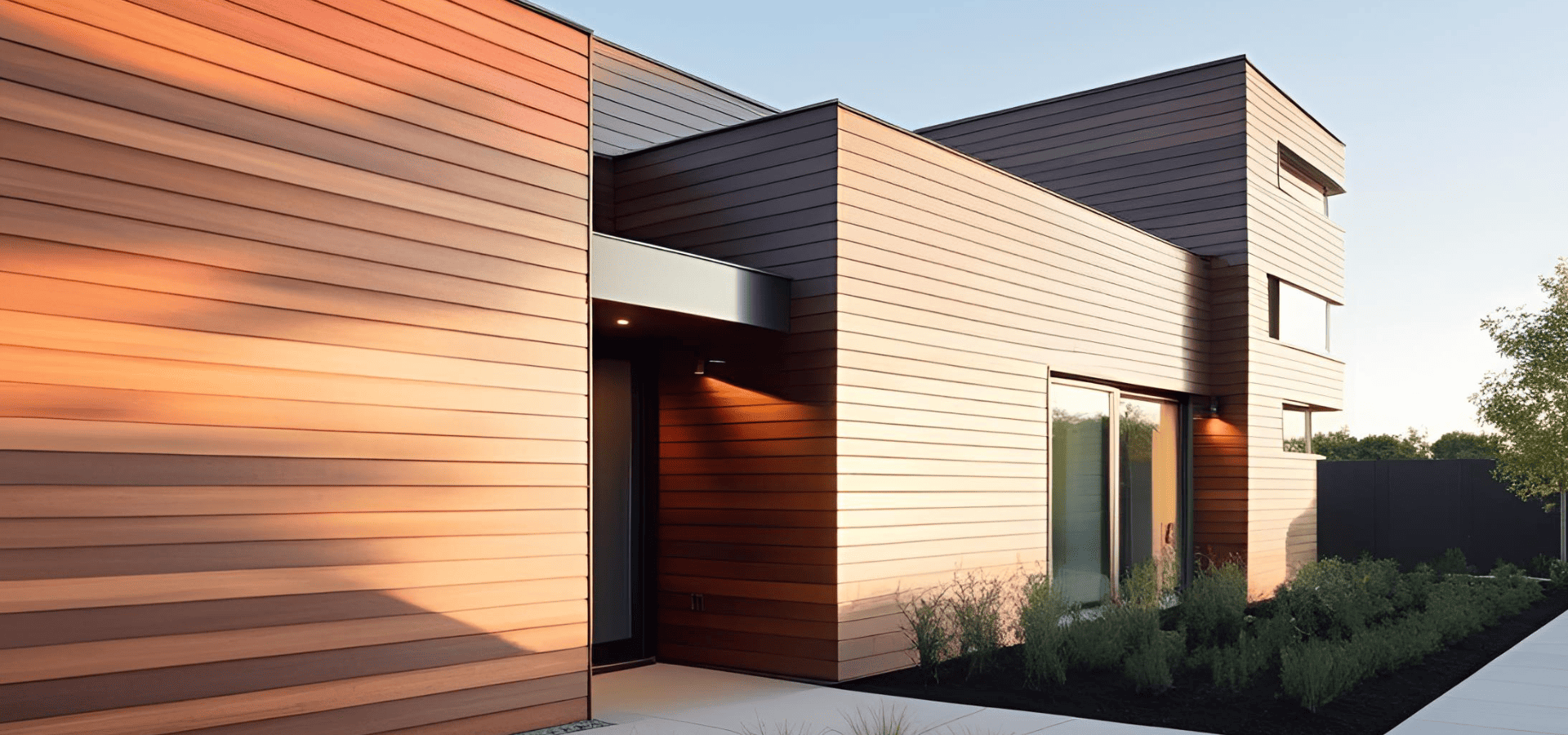The Ultimate Guide To Siding For Saltwater Environments
A house by the sea is a wonderful thing. The cooling sea breeze invigorates you every time you open your windows, and each time you look out, you see the majestic ocean.
Unfortunately, if you want to see the rainbow, you have to put up with the rain.
Saltwater is the most corrosive natural environment, and it can put your siding under some serious stress. That’s just a necessary evil that you’ll have to contend with if you want all the good stuff that come with staying near the sea.
But fret not. By choosing the right materials and properly installing and maintaining them, your siding will have no problem even in the most corrosive saltwater climates.
In this article, we’re going to cover exactly how to go about choosing your siding and ensuring that it can weather the elements.
The Challenges Of Saltwater/Coastal Environments
Before we get into the materials and installation and the nitty gritty, you should first understand why these tougher materials and coatings are needed.
Salt
Simply put, salt is highly corrosive. It can corrode many materials, not just metal.
When you’re staying near the sea, if you’re staying close enough, saltwater from the sea will spray onto your siding as the waves crash against the shore.
Even if you’re not staying so close that the splashes of the waves will reach your home, the salt particles from the sea will also get into the atmosphere and mix with rain clouds, resulting in salt-laden rain.
In other words, either way, your siding is going to be dealing with salt all the time, so you need to ensure it can withstand being exposed to salt consistently.
Humidity
Besides salt, salt-laden rain and splashes from waves carry something else too–water.
Not only will your siding be dealing with salt, but also water itself. This, coupled with the humid atmosphere of coastal environments, makes moisture damage another huge threat to your siding.
Besides just mold and mildew, moisture can also cause wood siding to rot and become virtually useless. Even without considering rot though, mold can also infiltrate and cause serious damage to various different siding materials, not just wood.
In the worst cases, moisture can damage your walls’ structural integrity and even cause them to collapse.
UV Rays
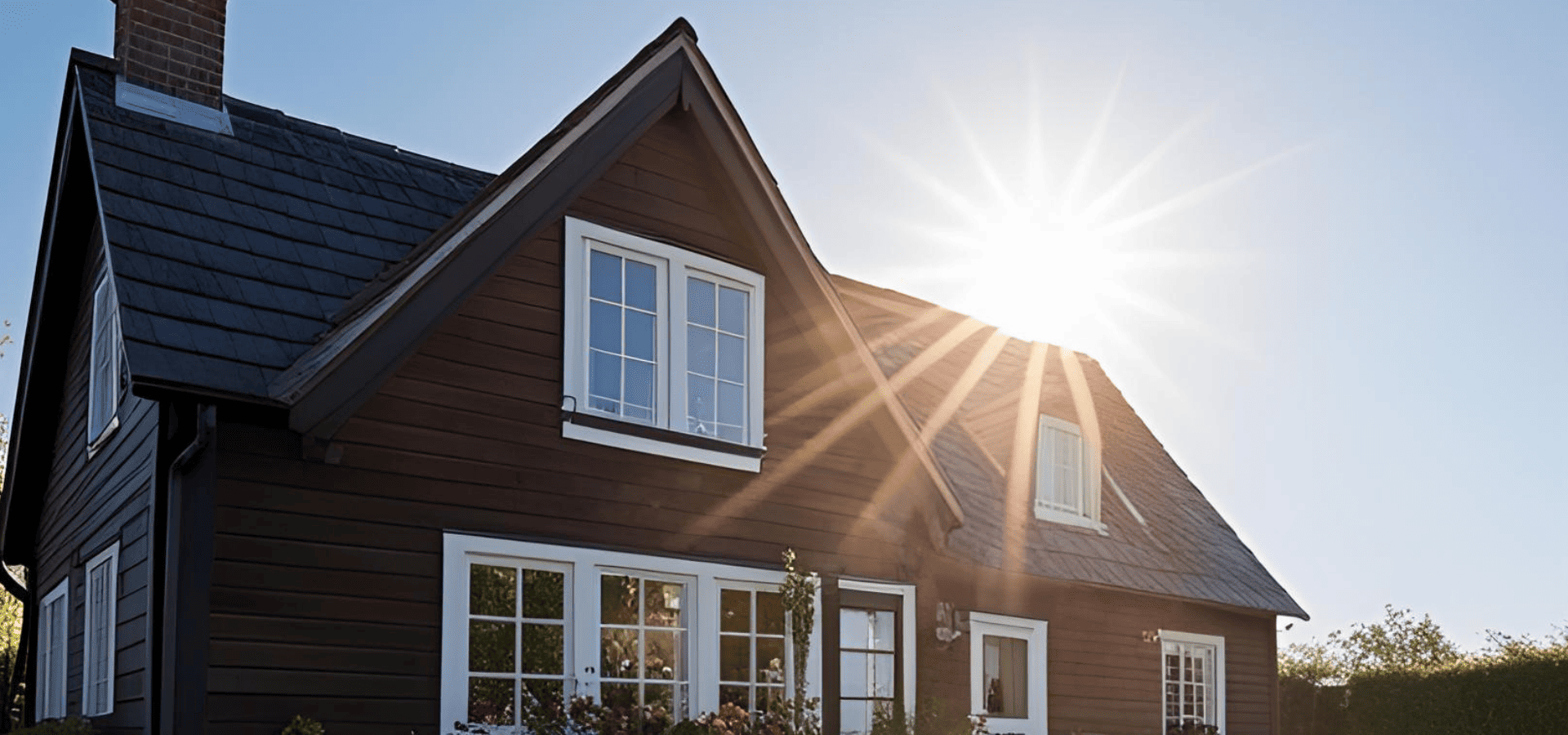
While not as dangerous as salt and humidity, UV rays will nevertheless damage your siding and wear it out over time.
Unlike modern homes where there are trees around and your neighbor’s houses to provide some shade, most of the time, coastal properties lack any sort of shade at all.
Traditional lush gardens with tall trees also don’t really fit the aesthetic of coastal homes.
As such, while not significantly more, coastal properties will be subject to more UV ray exposure, speeding up the process of wear and tear and putting the siding more at risk of issues like fading and warping or buckling.
Strong Winds
Urban areas often have trees and other buildings that block wind, slowing down their speeds.
However, the ocean is completely unobstructed, so winds around coastal areas tend to be stronger.
While it does mean that you'll be able to enjoy refreshing winds, it also means that your siding is under more stress.
Furthermore, storms and hurricanes, with no structures and trees to cushion their impact, will also exert more stress on your siding.
As such, your siding can loosen and even rip your siding right off if it's not installed tightly and securely.
There's also an increased risk of moisture penetration, so your siding will be more vulnerable to moisture damage.
Dealing With These Challenges
While the inherent durability of your siding will help with resisting wear and tear and impacts, dealing with the other challenges like salt and moisture is actually more about proper installation and coatings than your choice of siding.
First off, for corrosion and salt, even tougher materials can be affected, as evident by how saltwater can wear out even rocks over time.
As such, depending on your siding’s inherent toughness is rarely enough. Instead, coatings and sealants need to be applied to keep the corrosive salt from reaching your siding.
Next, for humidity, again, it boils down to the coating to keep moisture from reaching your siding.
On top of that, the siding needs to be installed tightly, leaving as few gaps as possible, especially at the areas where the siding meets the doors and windows. Any gaps also need to be sealed to prevent moisture penetration.
For UV rays, while the durability of the siding material will play a part in combating wear and tear, once again, a UV-resistant coating will greatly help slow down the process by reflecting UV rays and cushioning their impact.
Lastly, when dealing with strong winds, the strength of your siding is going to play a very minimal role. Instead, the most important thing to get right is installation.
To prevent your siding from being blown loose or even ripped off, the most important factor is secure installation using corrosion-resistant fasteners, proper technique, and adhering to manufacturer guidelines.
So all in all, proper installation is the most crucial element to ensure your siding can withstand the harsh elements of coastal environments.
That's not to say the material doesn't matter of course, which is why we're going to be going over the best materials next.
Best Siding Options
Now that you know the challenges you'll be dealing with, here are the best siding materials to stand up to the elements.
1. Metal
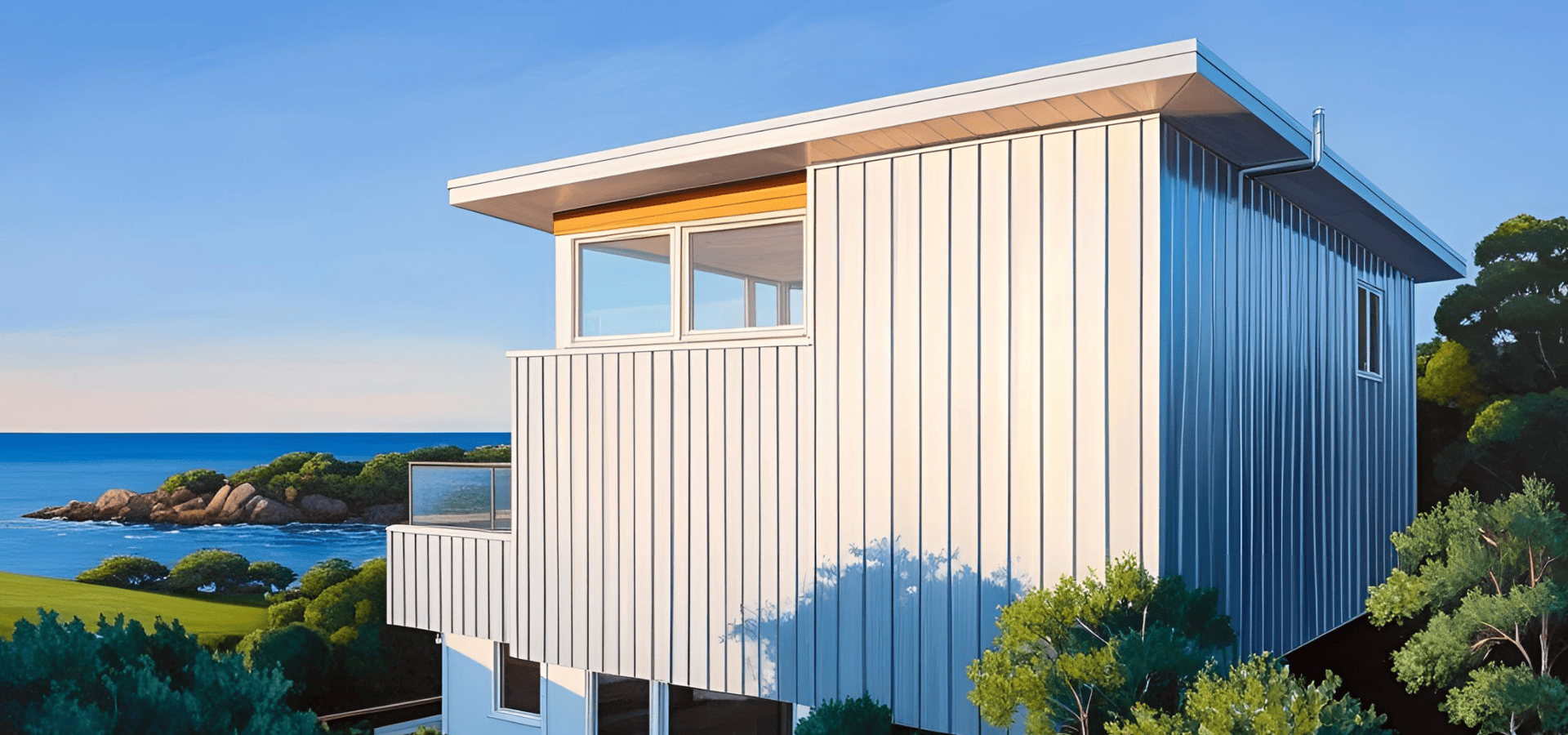
While metal may come as a surprise to some given its tendency to corrode, metal is actually one of the toughest and most robust siding materials.
As explained above, the key to overcoming most of the challenges that come with coastal climates is proper installation.
When installed with the appropriate protective coatings, metal of any kind, including steel and aluminium, will be highly resistant to corrosion, even in the face of constant moisture and humidity.
As long as the installation is tight and gaps are sealed up, moisture won’t be able to penetrate either, and strong winds won’t be able to damage your metal siding.
As for UV rays, metal is one of the toughest siding materials and won’t have much trouble with UV rays, even without a UV-resistant coating.
Finally, metal is also quite low-maintenance. Besides cleaning, you only need to reseal every 3-5 years.
Taking all these into account, metal is one of the best siding options for saltwater environments.
2. Brick/Stone Veneer
Brick veneer and stone veneer are widely considered the toughest and most long-lasting siding options, making them perfect for pretty much any type of environment.
Again, proper installation, coatings, and sealing are key.
As long as you’ve got those down, you can rest assured that your brick or stone veneer will last as long as any other siding option.
In fact, when maintained well, brick and stone veneers can easily last you upwards of 50 years, and sometimes even more than a century. This is the longest average lifespan among all siding materials.
The only downside is that for this unmatched quality and robustness, you’re also paying an unmatched price. Brick veneer and stone veneer are the two most expensive siding materials.
3. Vinyl
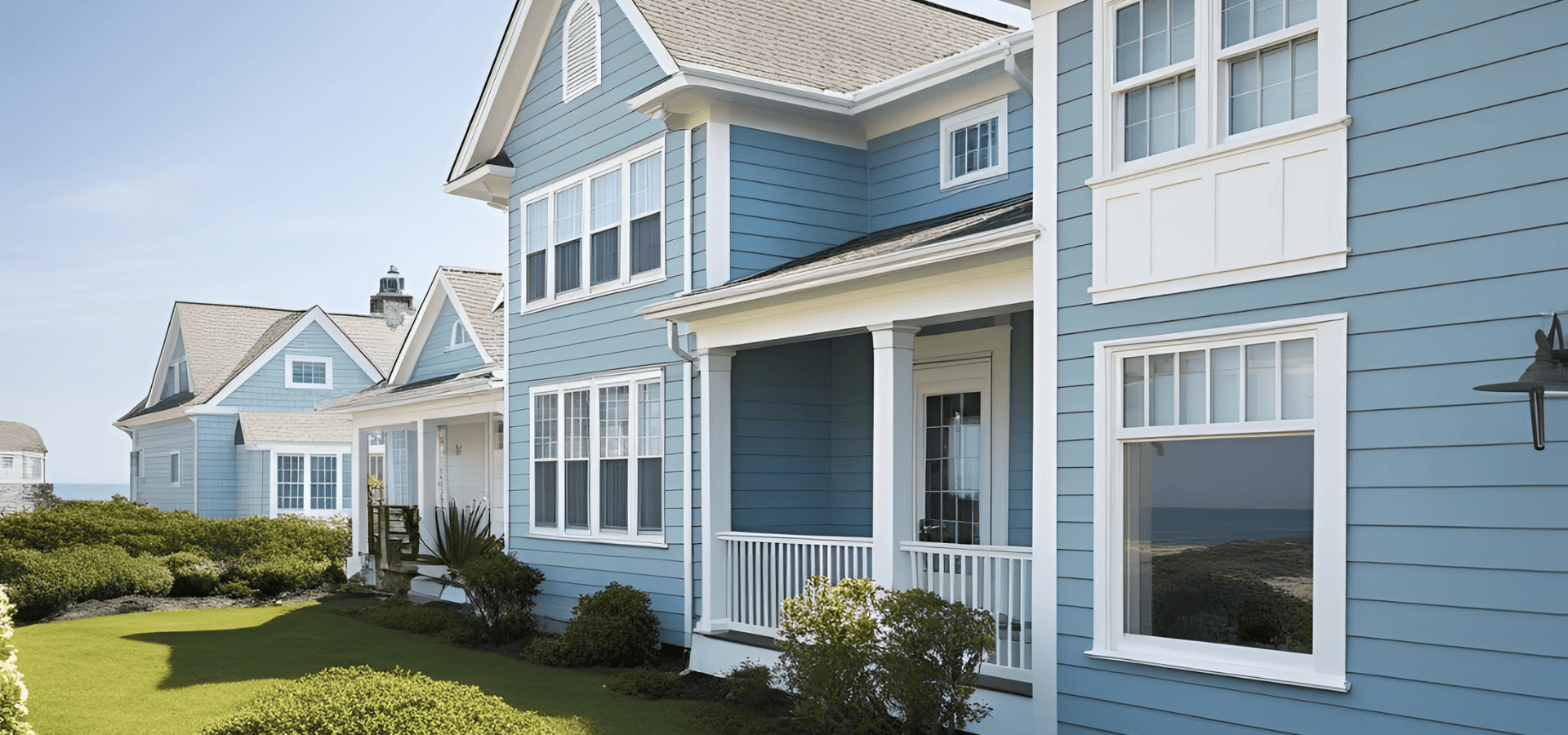
If you found those two siding options to be out of your budget, worry not. Even vinyl, the most affordable siding material, can be used for coastal regions.
Vinyl may be the most affordable option, but that doesn’t mean it’s bad.
For one, as long as installation is done properly, even lower-quality siding materials can still do a decent job standing up to saltwater climates.
And for another, manufacturing processes have evolved to allow modern-day vinyl to have pretty good durability.
It goes without saying that you can’t expect the toughness of the higher-end materials, but considering that vinyl is the most budget option, its relatively good durability is commendable.
It also has a much shorter lifespan than the more premium materials, standing at roughly 20-40 years, which is still great for what you’re paying.
In short, at the most accessible price on the market, vinyl will do a relatively good job of holding up to saltwater conditions.
Siding Installation Keys
By now, you should be well aware of the importance of installation, and we’ll be sharing key areas to focus on to ensure proper installation.
Secure Fastening Systems
Coastal areas have stronger winds than usual, so you should be using stronger fastening systems too.
This means:
- Using more fasteners than for normal installations
- Corrosion-resistant stainless steel or hot-dipped galvanized fasteners
- Ring-shank nails that provide superior holding power
Coating, Sealing, And Flashing
Even the toughest siding can use some extra help, particularly in harsh saltwater conditions.
Coating and sealing become even more important when you’re using less durable siding options.
The most important coatings you’ll want to have are:
- Moisture-resistant coating
- UV-resistant coating
- Anti-corrosion coating (For metal siding)
- Elastomeric coating
Many modern products offer all these protections in a single coating solution, but in the event that you’re unable to get your hands on a comprehensive solution, you can also apply the coatings over each other.
Just make sure to check that the coatings are compatible, so that applying one over the other won’t affect the performance of either one of the coatings.
In any installation, there will inevitably be gaps. This can be at the joints between panels, around windows and doors, or around flashing. These are normal, just make sure they’re sealed up so that moisture doesn’t get through.
Finally, make sure your flashing is installed as an additional layer of protection against moisture.
High-Quality Siding Installation
Lastly, high-quality siding installation entails both of the keys before this, but that’s not all.
High-quality installation also means leaving the proper clearances, ensuring all panels are aligned, ensuring proper drainage and ventilation, and adhering to manufacturer guidelines.
This may sound simple, but certain siding materials like stone veneer can be quite tricky and complicated to install.
If you’re not confident that you know what you’re doing, it’s best to leave the installation to a professional. Spending extra on a professional can save you from even larger costs in the future due to poor installation.
Conclusion
By now, there should be no doubt in your mind that proper installation is of paramount importance to helping your siding withstand saltwater climates.
Proper installation with high-quality siding will keep your home protected from the harsh saltwater environment for many years to come.
However, don’t forget the last piece of the puzzle–maintenance.
Maintenance is often quite minimal, but that doesn’t mean you can neglect it. It’s one of those small tasks that are relatively easy to perform and won’t make a noticeable impact, but forget to do it, and you could find yourself in serious trouble as small issues that go unnoticed turn into severe problems.
Always keep these three pieces of the puzzle in mind so that your siding will be able to do its job dutifully and protect your home.
You might also like
